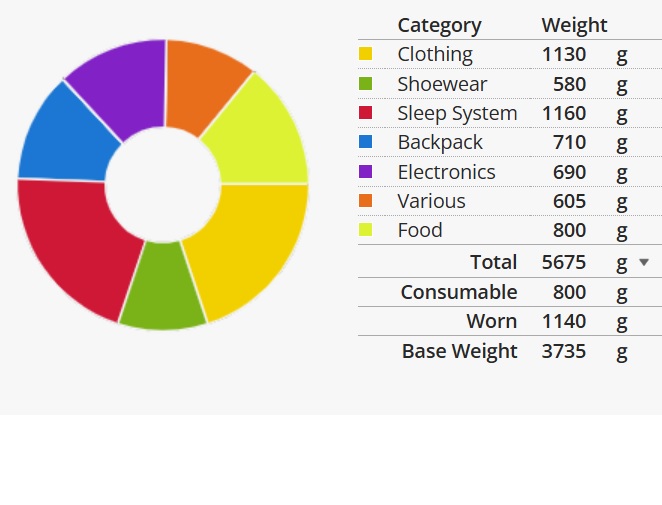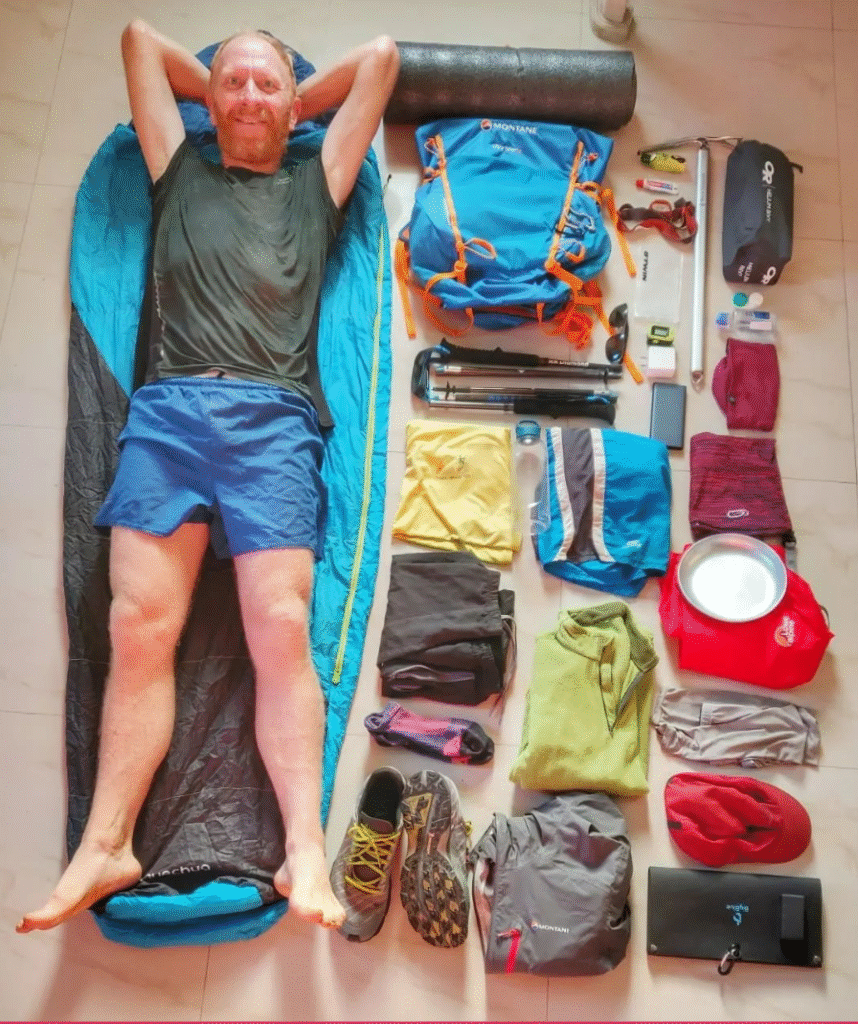
A quick overview below on lightweight packing for traversing the Himalayas. Weight of your backpack is independent of the duration of your journey and the season. We list a few sample lightweight brands below for your reference.
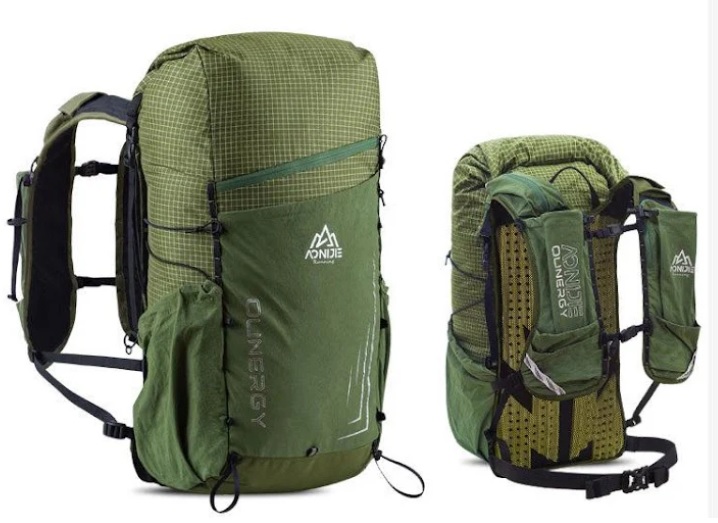
Avoid large 50L+ heavy packs which will result in over packing. A lightweight frameless 30L pack will force you to prioritize needs over wants. A frame is only required for heavier loads (mountaineering). 30L fits everything (below) you require for a month long journey. Ensure proper shoulder straps, straps to attach some gears externally and stretch pockets to quickly access frequently used items. The Aonijie 30L running pack is an economical lightweight pack (550 grams, 80 USD) with a comfort fit and ventilation on the back. Use dry-bags to keep your essential gears (electronics, jacket, sleeping bag) dry. Pack heavy items (food, electronics) at the bottom for better balance.
Next is a good pair of lightweight trail shoes with breathable mesh to keep your feet ventilated and dry. A good grip sole (slippery terrain) with a wide toe box (expand toes) and minimal toe drop for a natural walking form. Boots offer more support but are heavy and not easy to dry once wet inside. For low altitude terrain I like a trail sandal like Xero genesis (more ground feel) or Canyon sandal (more protection). For higher altitude rocky terrain the Altra mountain king Mt-2 (minimalist) or Lone peak (more cushioning) is a great lightweight choice.
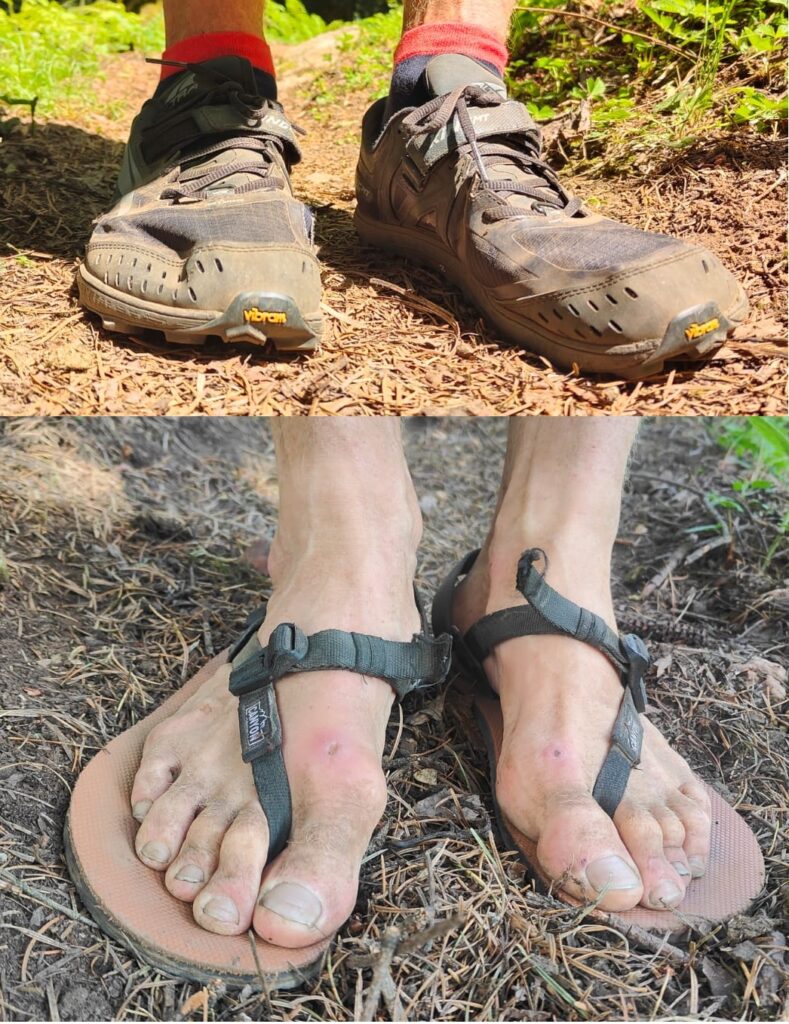
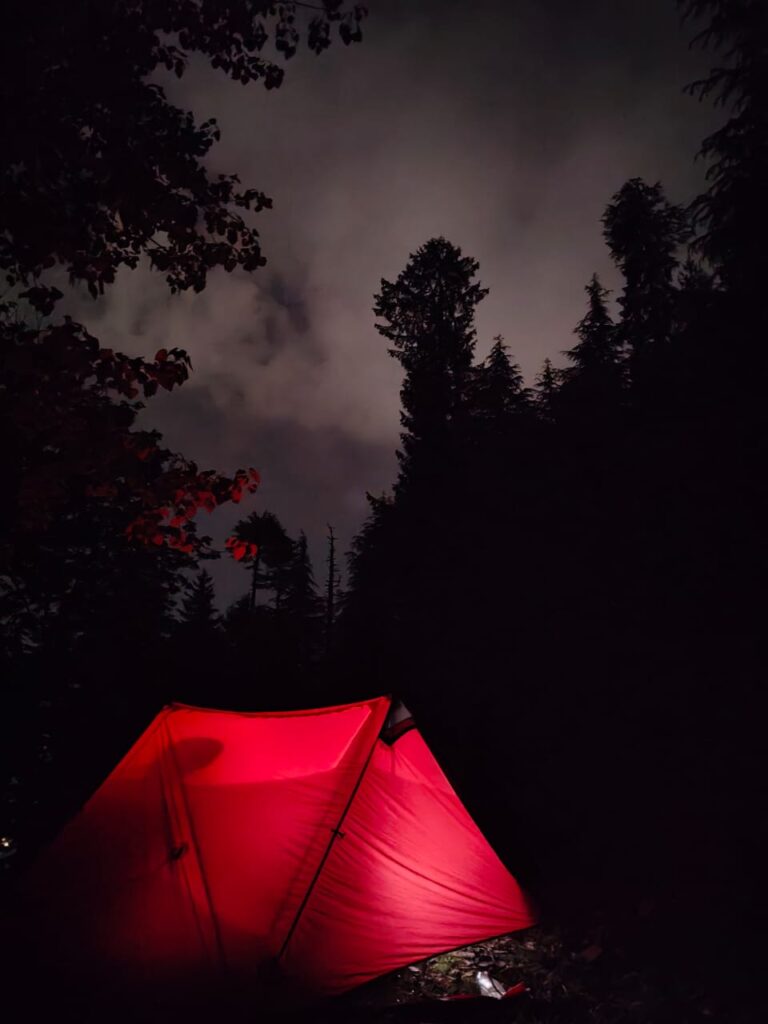
Invest in a lightweight tent. You cannot carry a bulky heavy tent in steep Himalayan terrain. Go for a pyramid tent with lightweight material which reuses your hiking poles instead of separate poles. I love the Lanshan 1 or 2 person 3-season double layer tent (around 900 vs 1100 grams) and just carry the outer sheet (300 grams) on my Himalayan journeys. Lightweight tents can be expensive (150-400USD). You can also make a nice ultralight shelter using a 3x3m lightweight water-proof tarp sheet (10D material, lightweight, tear proof, 30 USD) using hiking poles, a few pegs and guylines.
To sleep comfortably in cold nights at high altitude you ll need a warm sleeping bag. A comfortable sleep is essential to recover and resume hiking the next day. Choose a lightweight quilt (blanket + footbox) or sleeping bag (mummy) brand filled with either natural down or synthetic insulator. I use the Ice flame down quilt which offers an excellent temp / weight ratio at 0C / 650gr (150 USD) and will do for most seasons in the Himalayas.
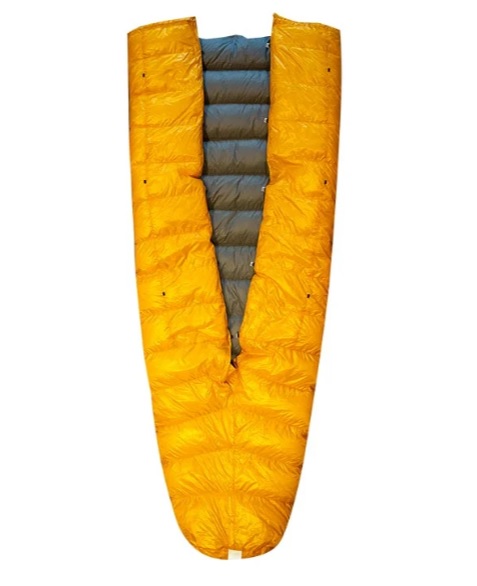
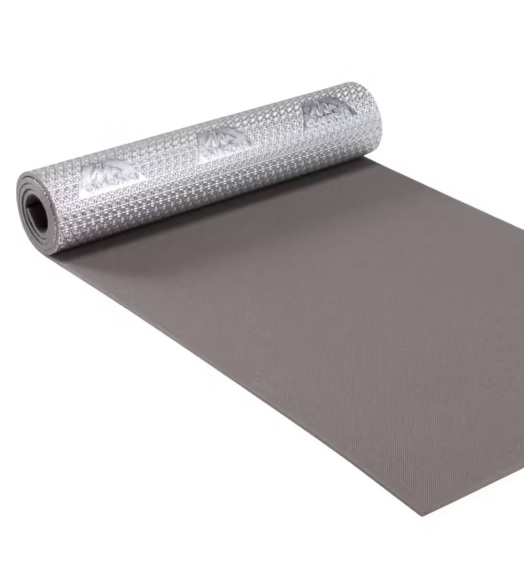
You ll need an insulative pad to keep yourself warm while sleeping on cold and wet under ground. An inflatable air mat offers excellent insulation but is usually quite heavy (500gr). I prefer to go for a simple 8mm lightweight Quecha MT100 insulative mat (250gr) which keeps me warm across seasons and terrain. You can also buy cheap thermocol sheet in local shops (150Rs) which offers good insultation.
Getting wet at colder high altitude is dangerous as you lose body heat 20x faster while wet vs. dry. Keep yourself dry and warm at all times during bad weather (rain, snow, wind). A lightweight rain jacket is your most important gear to protect you from the weather elements. If bad weather persists then find a shelter or pitch up your tent to stay dry and warm as a rain jacket can only keep you temporary dry in steady rain. Go for a lightweight rain jacket like the Decathlon Quecha NH100 (250gr, 10 USD) or other brand.

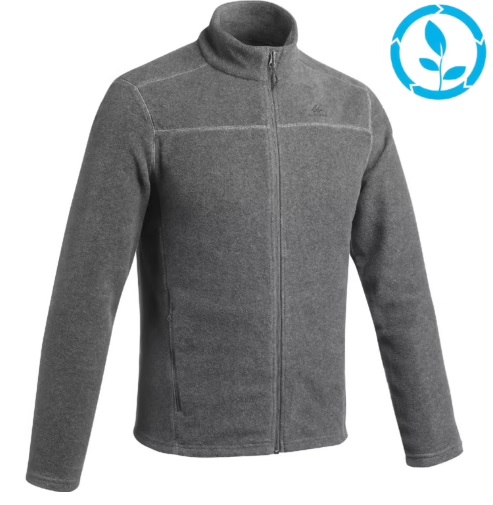
When you stop moving the lower ambient temperature at higher altitudes quickly drains your body heat. It’s important to keep yourself warm while hiking in cold high altitude weather and cold night temperatures. You can invest in a good lightweight warm puff jacket (0C) or even consider a cheap Decathlon Quecha mh120 fleece (250gr, 10 USD) which combined with a rain jacket is also pretty effective to stay warm and dry.
The Himalayan terrain will throw unexpected challenges at you – steepness, slippery terrain, deep & steep snow, stream crossings, landslides and ice. A pair of lightweight hiking poles provides four points of contact while navigating terrain where you might lose balance or need extra support. Hiking poles can also be reused to pitch up a lightweight pyramid tent thereby offering a multi-purpose tool to navigate challenging terrain. Aonijie offers cost-effective 120cm carbon poles (240 grams, 60 USD for a pair)
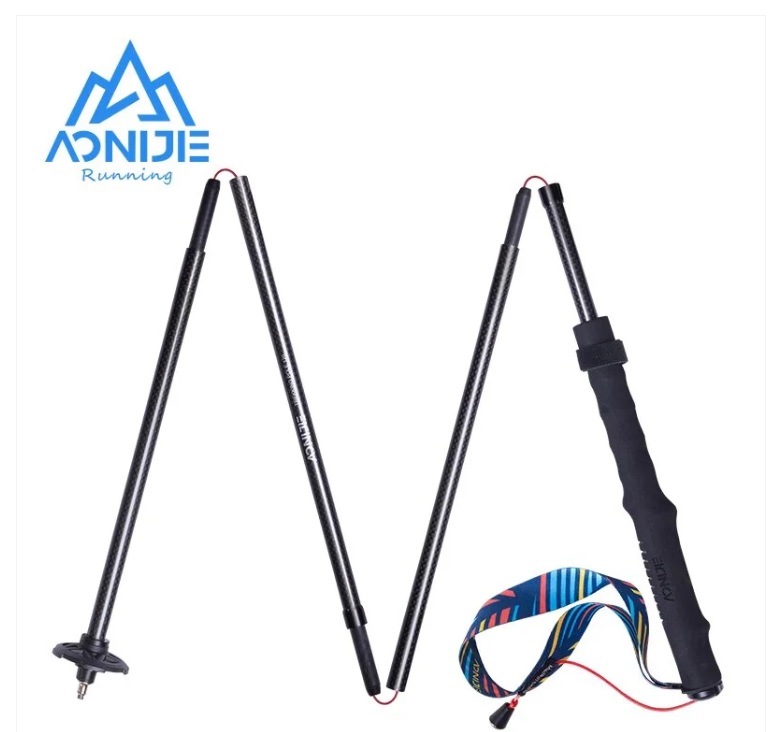
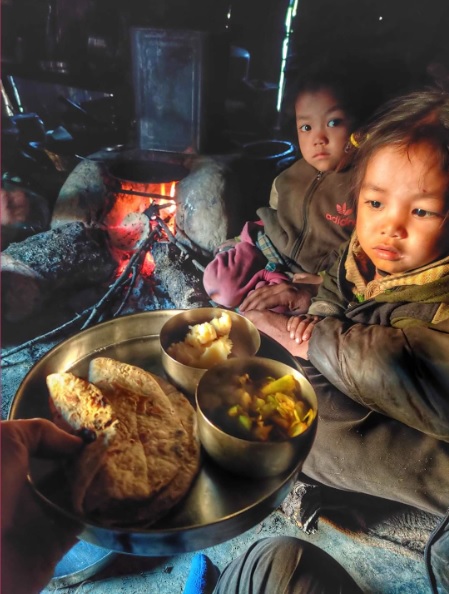
Food is heavy. Carry just sufficient food ration till the next village after your mountain pass where you can resupply. 90% of Himalayan passes can easily be done in 1-2 days which means you carry minimal food ration. Bigger traverses might just last for 4-5 days. There are 40 thousand small villages, hamlets and seasonal dwellings across the Western Himalayas which enable the alpine hiker to go ultra light in terms of food ration. Avoid cooking – stove and fuel are heavy and take space in your backpack. At most I carry a 150gr aluminum plate to cook and eat my food. Carry a lighter and some camphor to light up wood and dry animal dug to make some warm food.
Water is heavy! Avoid carrying 3L of water from one stream to he next stream. I never carry a single drop of water on my month long Himalayan journeys. Water is omnipresent and streams are perennial due to snow melt during different months at different altitudes. Always carry an empty 500l plastic bottle (50gr) to scoop up water from small springs and ice cold streams.

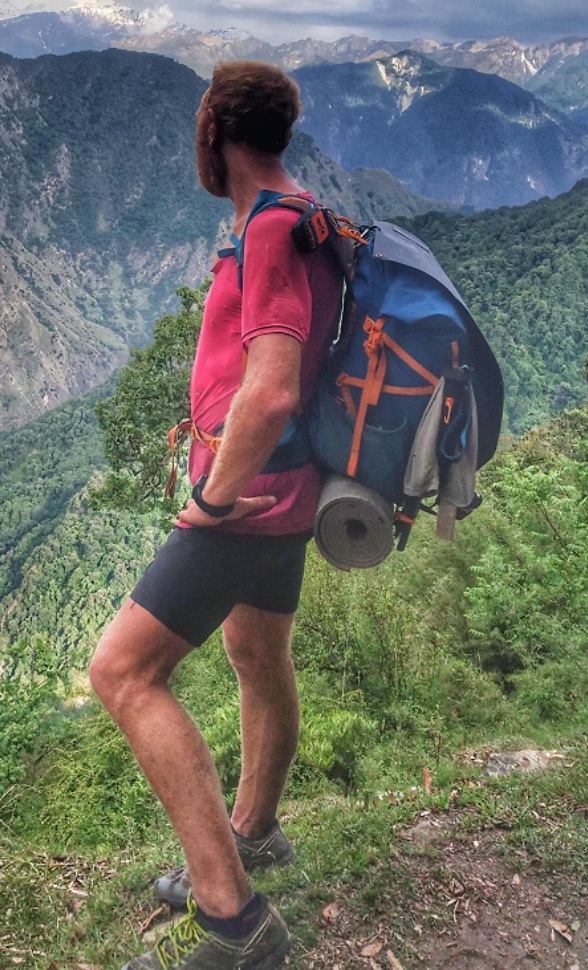
Clothing. Use breathable dry-fit clothing in the Himalayas. Hiking up steep terrain with a lightweight pack will generate internal body heat that will keep you warm during most of the day. Dry-fit clothing is comfortable and quickly dries when wet. Only while you stop (generating heat) for pitching up your tent or eating lunch you will feel chill. Early mornings and during evenings use your puff or fleece to trap the body heat. Carry one set of dry fit shorts/tee for hiking and one for the night to keep your sleeping bag clean. Periodically rinse your clothes in streams. Carry two pairs of dry-fit socks and clean/change every day to keep your feet clean and dry.
Navigation & Communication. A phone (200gr) with a good 4000mhA+ battery will last 1-2 days in flight mode. Use any mobile app (OSMAnd, Mapy.cz, Gaia…) for offline navigation with downloadable OSM maps, contours and other reference maps like Survey of India. A 10K mhA powerbank (250gr) will extend the battery life with another 3-4 days. Avoid 20K mhA banks which are heavy (450gr). Not a big fan of solar chargers which are bulky, heavy and less efficient. Phone chargers tend to be heavy – go for a lightweight fast charger like the Anker Nano Pro (36gr). All this will easily add up to 5-600gr of electronics to navigate your way in the wild.
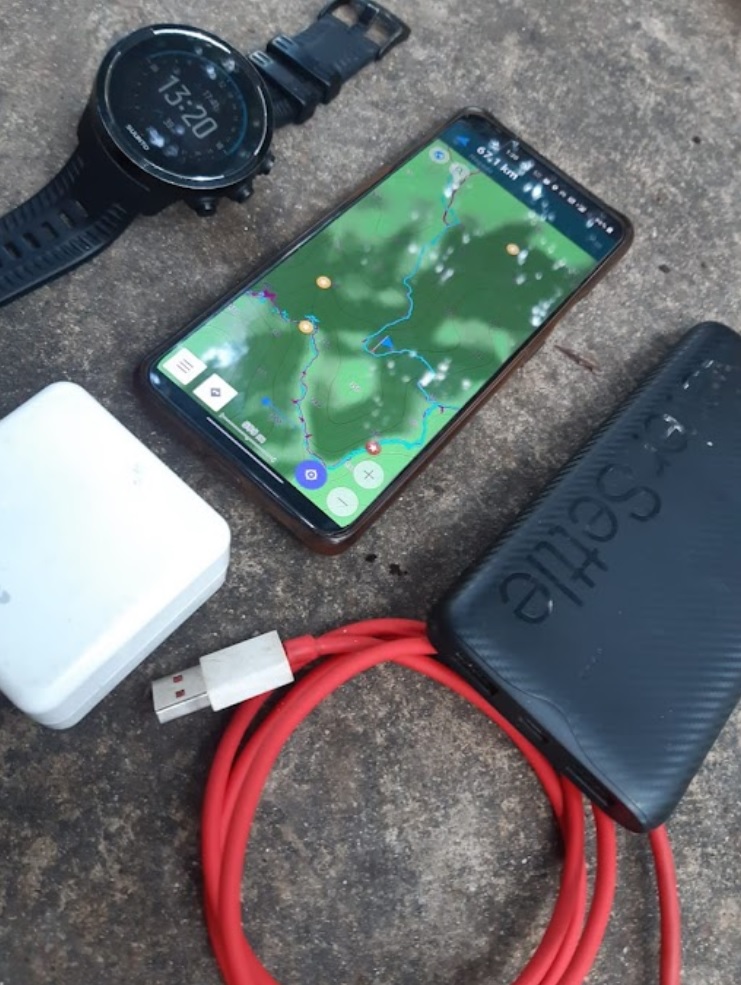
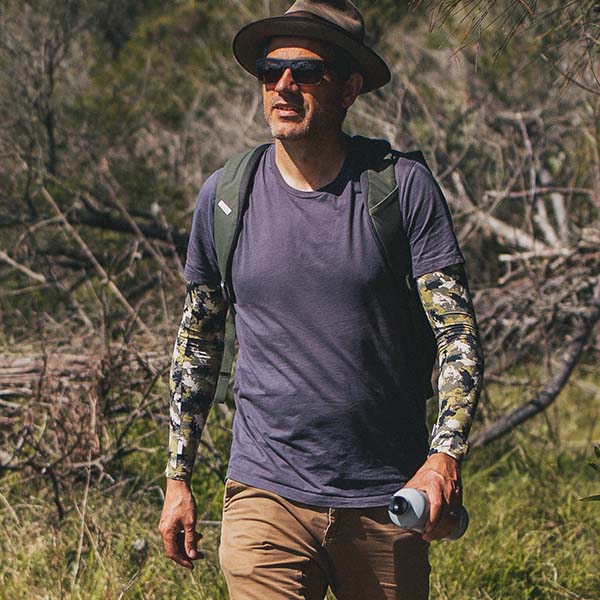
Sun protection. You are more exposed to UV radiation at higher altitudes. While traversing fresh, frozen snow you might be sun burned and snow blinded due to increased UV reflection. Absence of any forest cover in the alpine desert of Ladakh and Zanskar can make the sun quite intense. I am not a big fan of sun screen while doing sports. I suggest you carry a cap, arm sleeves and bandana to protect your skin from harmful sun rays while hiking high altitude terrain. Use sun shades to protect yourself from temporary snow blindness.
Crossing steep, hard snow can be a challenge on your Himalayan traverse. Winter snow usually remains longer in gullies which shield it from the sun. Crossing a steep snow gully in the morning (hard frozen) can be difficult without poles, micro spikes or ice axe. The black diamond 65cm ice axe (700gr) helps you cut through steep frozen gullies where you would otherwise get stuck. Only carry this extra weight early summer on those mountain passes where you expect to cross steep gullies.

Weight all your gears individually. Every 100 grams counts in the steep terrain of the Himalayas. Add up everything and ensure to keep the overall weight of your gears below 4-5kg. Going lightweight in steep terrain has tremendous benefits – going light allows you to cross the mountain pass and reach your destination sooner thereby requiring less food, water and able to camp at lower, warmer altitude further reducing weight.

